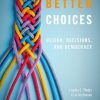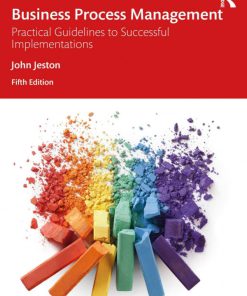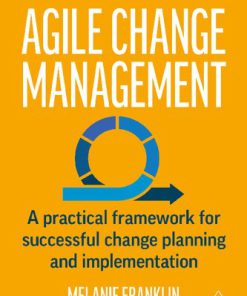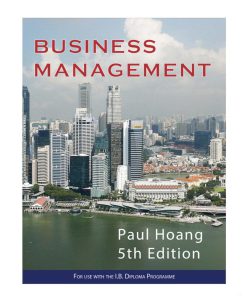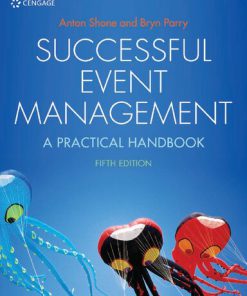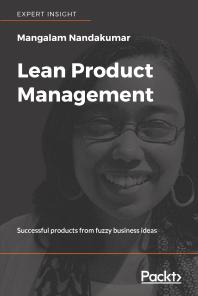Business Process Management Practical Guidelines to Successful Implementations 5th Edition by John Jeston 1000575888 9781000575880
$50.00 Original price was: $50.00.$25.00Current price is: $25.00.
Business Process Management Practical Guidelines to Successful Implementations 5th Edition by John Jeston – Ebook PDF Instant Download/Delivery: 1000575888, 9781000575880
Full download Business Process Management Practical Guidelines to Successful Implementations 5th Edition after payment

Product details:
ISBN 10: 1000575888
ISBN 13: 9781000575880
Author: John Jeston
Business Process Management Practical Guidelines to Successful Implementations 5th Table of contents:
Part 1 FREQUENTLY ASKED QUESTIONS
1 What is business process management?
2 How can we demystify business process management?
Brief history of business process management
BPM hype cycle
What is mystifying about BPM?
The iceberg syndrome
Exploring “reality”
Change management and performance management
3 Who should be involved in BPM and the critical success factors
Management of business processes
Use of external BPM experts
Critical success factors
4 When should you do BPM—what are the main drivers and triggers?
5 How should you start BPM—bottom-up or top-down?
Bottom-up approach
Top-down approach
6 Why is it important to improve business processes before automating them?
What are the problems with automating first?
Why is this not working?
Why is this so?
The need to improve processes first
Key considerations
Conclusion
7 What are the technology components of BPM?
Modeling and design
Execution and tracking
Performance management
Technology standards
8 Should you be customer-centric?
9 Why is determining BPM foundations a critical first step?
BPM foundations
BPM enablement
BPM foundations and enablement benefits
10 Why do you need a structured approach to implementing BPM?
Typical common pitfalls
Part 2 BPM—HOW DO YOU DO IT? THE 7FE FRAMEWORK
11 7FE framework overview
7FE framework
7FE framework phases
Project essentials
A process-focused organization
Addendum: 7FE framework and six sigma, lean, and lean six sigma
12 Guidelines on how to use the 7FE framework
Why a “one approach fits all” philosophy does not work?
How are BPM activities initiated?
Four implementation scenarios for BPM
How to determine which scenario is applicable
Process-focused business transformation program
Skipping of a phase
Paralleling phases
13 Foundations phase
Why?
Results
How?
Detailed steps
Foundations phase outputs
Foundations phase risks
14 Enablement phase
Why?
Results
How?
How are the TOM subcomponents created?
Detailed steps
Digital strategy
Step 1: communications
Step 2: process governance
Step 3: process architecture
Step 4: performance management
Step 5: people and culture
Step 6: organization design
Step 7: technology
Enablement phase outputs
Enablement phase risks
15 Launch phase
Why?
Results
How?
Detailed steps
Business process architecture committee
Realize value
Launch phase outputs
Launch phase risks
16 Understand phase
Why?
Results
How?
Detailed steps
Realize value
Understand phase outputs
Understand phase risks
Extra reading
Continuous improvement: standard operating procedure
Appendix a: change investigation report
17 Innovate phase
Why?
Results
Key misunderstandings about innovation
How?
Customer service versus customer satisfaction
Detailed steps
RPA is often used to automate subprocesses
Realize value
Innovate phase outputs
Innovate phase risks
Extra reading
18 People phase
Why?
Results
How?
Detailed steps
People phase outputs
People phase risks
19 Develop phase
Why?
Results
How?
Detailed steps
Business process architecture committee
Realize value
Develop phase outputs
Develop phase risks
20 Implement phase
Why?
Results
How?
Detailed steps
Realize value
Implement phase outputs
Implement phase risks
21 Realize phase
Why?
Results
How?
Detailed steps
Critical success factors
Realize phase outputs
Realize phase risks
22 Sustainability phase
Why?
Results
How?
Detailed steps
Step 1: evaluate project results
Step 2: evaluate handover/takeover
Step 3: ensure process steward training completed
Step 4: evaluate process measures and performance management
Step 5: process quality assurance
Step 6: update process documentation
Step 7: communications
Realize value
Sustainability phase outputs
Sustainability phase risks
23 Essentials introduction
Why?
How?
What are the three essentials?
24 Project management
Why?
Results
How?
Project gates
Stakeholder management
Managing stakeholders for successful delivery
Interest-based stakeholder management
Continuous active project review
Project premortems
Project management risks
25 People change management
Organizational culture
Process of people change management
Appreciative inquiry approach
Extra reading
26 Leadership
Why?
How?
Aspects of leadership
27 Organizational sustainability and performance management
Why?
What are the elements that enable organizational sustainability?
Organizational process governance
Organizational process assets
Organizational process performance management
Benchmarking
Organizational benefits management framework
Organizational culture
Fine-tune organizational sustainability and performance management
Part 3 INTRODUCTION
28 Case studies from the USA, Asia, and Europe
Smaller case studies
Larger case studies
29 BPM maturity
Introduction
Business process management maturity
The BPMM model
Application of the BPMM model
Related work
Glossary
References and bibliography
Index
People also search for Business Process Management Practical Guidelines to Successful Implementations 5th :
business process management standards
what is business process management pdf
business process management best practices
business process management principles
Tags:
John Jeston,Business Process,Management Practical Guidelines
You may also like…
Business & Economics - Management & Leadership
Uncategorized
Guidelines for Revalidating a Process Hazard Analysis Ccps (Center For Chemical Process Safety)
Business & Economics - Human Resources
Business & Economics - Others
Business & Economics - Management & Leadership
Business & Economics - Industries
Successful Event Management: A Practical Handbook, 5th edition Parry
Business & Economics - Project Management
Business Research: A Practical Guide for Students, 5th Edition Jill Collis
Business & Economics - Management & Leadership
Uncategorized

